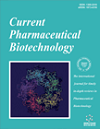-
s Evaluation of Variances in VEGF-A-D and VEGFR-1-3 Expression in the Ishikawa Endometrial Cancer Cell Line Treated with Salinomycin and Anti-Angiogenic/Lymphangiogenic Effect
- Source: Current Pharmaceutical Biotechnology, Volume 22, Issue 5, Apr 2021, p. 697 - 705
-
- 01 Apr 2021
Abstract
Background: In cancer, an excessive and uncontrolled process of creating new blood and lymphatic vessels that play a key role in the metastasis process can be observed. The Vascular Endothelial Growth Factor (VEGF-A,-B,-C,-D) family together with their specific receptors (VEGFR-1,-2,- 3) plays a key role in these processes, therefore, it would be reasonable to determine the correct pattern of their expression. Objectives: The study aimed to assess the use of salinomycin as an anti-angiogenic and anti-lymphangiogenic drug during endometrial cancer by examining changes in the expression pattern of VEGF-A, VEGF-B, VEGF-C, VEGF-D, VEGFR-1, VEGFR-2 and VEGFR-3 depending on the treatment period of the Ishikawa endometrial cancer cells with salinomycin in comparison to the control culture. Materials and Methods: To determine how influential salinomycin was on the expression of both mRNAs, 1 μM of the drug was added to the cell culture and then it was cultured all together for 12, 24 and 48 hour periods. The cells that made up the control culture were not treated with salinomycin. To determine the changes in the expression profile of the selected genes, we used the microarray, techniques: RTqPCR and ELISA (p<0.05). Results: For all isoforms of VEGF-A-D as well as receptors of VEGFR-1-3, a decrease in expression under the influence of salinomycin was noted. For VEGF-A and VEGFR-1, the difference in the expression between the culture treated with salinomycin in comparison to the control was statistically significant (p=0.0004). In turn, for VEGF-B, the difference between the culture exposed for 24 hours in comparison to the control (p=0.00000) as well as the comparison between H48 vs. C (p=0.00000) was statistically significant. In reference to VEGF-C, VEGFR-2 and VEGFR-3, the statistical analysis showed the significant difference in expression between the culture incubated with the drug for 12, 24 and 48 hours in comparison to the control as well as between the selected times. For all of these comparisons, p=0.00000 was utilized. Conclusion: Salinomycin changes the expression pattern of VEGF-A, VEGF-B, VEGF-C, VEGF-D, VEGFR-1, VEGFR-2, and VEGFR-3 in endometrial cancer cells. The obtained results suggest that salinomycin might exert the effect via VEGF signaling pathways.


